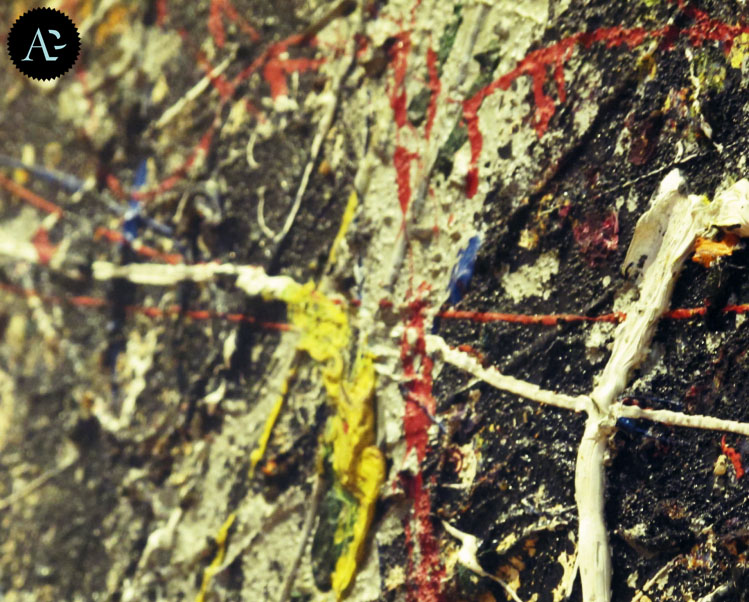
There is always a good reason to return to the Peggy Guggenheim Collection.
It is probably the most “alive” museum I know, because every time I find something new to see, works to discover, artists to learn about from unusual points of view, and then because there is always a festive air in the halls.
I always feel like everyone is having a good time and it’s contagious!
Now there is a new good reason to come back: the return of one of the most beautiful works by the action painting genius.
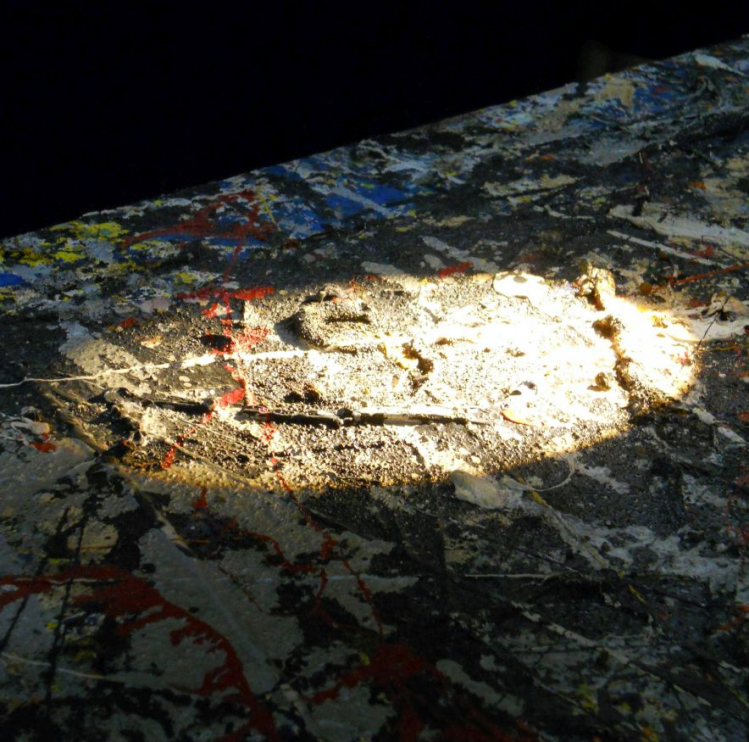
After more than a year’s absence and after being the subject of a major study and conservation project at the Opificio delle Pietre Dure in Florence, “Alchemy” returned to the Peggy Guggenheim Collection.
The event was celebrated with the scientific exhibition “Jackson Pollock’s Alchemy. Journey Inside Matter” (Feb. 14-April 6, 2015), but the work is now on display again within the exhibition itinerary and is, these months, placed next to the large Mural that Peggy commissioned from Jackson in 1943.
Alchemy was made in 1947 and represents the beginning of the break with traditional canons of painting and drawing for a pictorial production in which the artist literally enters the work along with the color.
The pictorial surface becomes a body only with the artist’s gesture, which becomes a palette where color, but also other materials enter the composition as if drawn by a force that holds and engulfs everything.
Alchemy is action painting in its purest form, a technique that would be the mainstay of all Pollock’s artistic production.
Alchimia’s restoration project is the first in Italy on a contemporary artwork of such importance and was an opportunity to verify that the pictorial materials still adhered perfectly to the canvas, consolidate some parts and clean the surface.
The work, as Pollock finished it, has no protective varnish and therefore, over time, a layer of dust had been deposited that did not allow one to fully admire the composition, which is not only a painting but also a three-dimensional masterpiece.
The work has regained its colors and the 19 colors used by the artist have been revealed.
In the past, this masterpiece might have seemed to have been created without a precise plan, through random sketches and pourings, but the work of study and restoration has revealed a precise compositional order.
There is a rational plan in the laying out of colors, in which straight lines are balanced with curved ones, bright colors with dull colors, black with silver, blue with red.
The thin white strokes that reemerged after cleaning draw a kind of grid, as if Pollock had had the overall architecture of the painting in mind from the beginning, and thus directed the work as a conductor does with his elements.
Thus the team involved in this very important project agrees that in such a large work it would have been impossible to achieve this result in a completely uncontrolled way.
The canvas was made with 4.6 kilograms of pictorial matter, a huge amount when compared to that used for ancient and Renaissance paintings of the same size, which contain between 200 and 300 grams on average.
The research project, the first ever in Italy, was made possible by the establishment of a scientific team coordinated by the conservation departments of the Peggy Guggenheim Collection in Venice and the Solomon R. Guggenheim in New York in collaboration with the Opificio delle Pietre Dure in Florence, with valuable input from CNR-ISTM and the SMAArt Center of Excellence at the University of Perugia, CNR-INO and INFN at the University of Florence, the Visual Computing Lab at CNR-ISTI in Pisa, and the Department of Chemistry at the University of Turin.
The project also involved American scientists, conservators and curators who have already done research on Pollock’s techniques.
I would say that, just to see this masterpiece, there is a very good reason to return to the Peggy Guggenheim Collection or to go there for the first time.
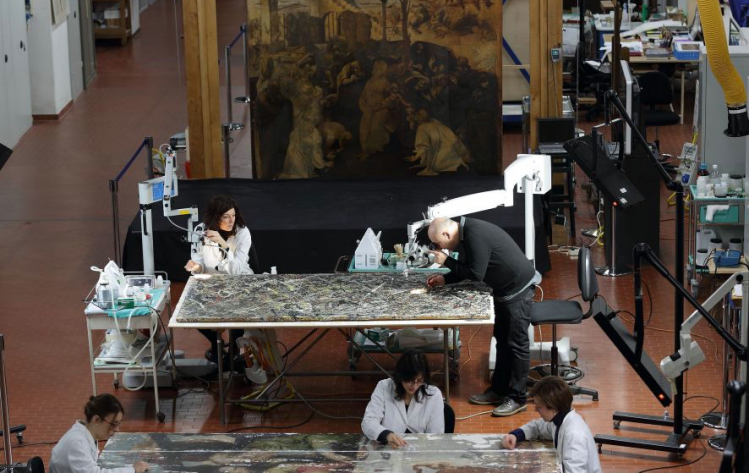
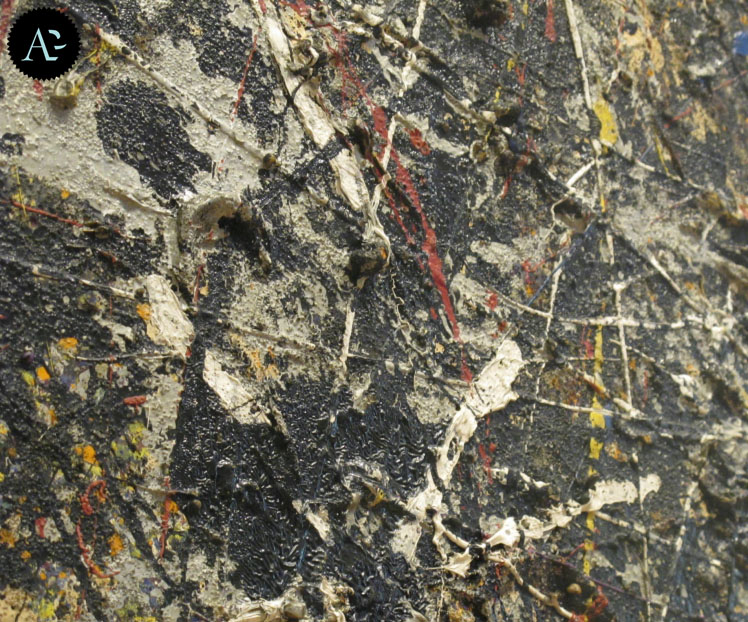
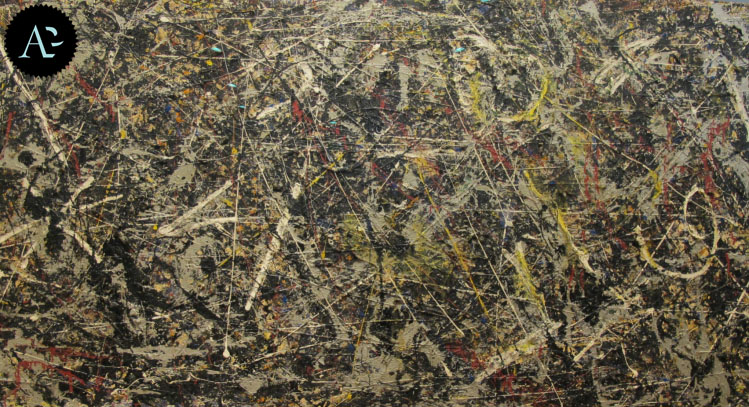
INFO
INFO
Collezione Peggy Guggenheim
Palazzo Venier dei Leoni. Dorsoduro 701 – 30123 Venezia

